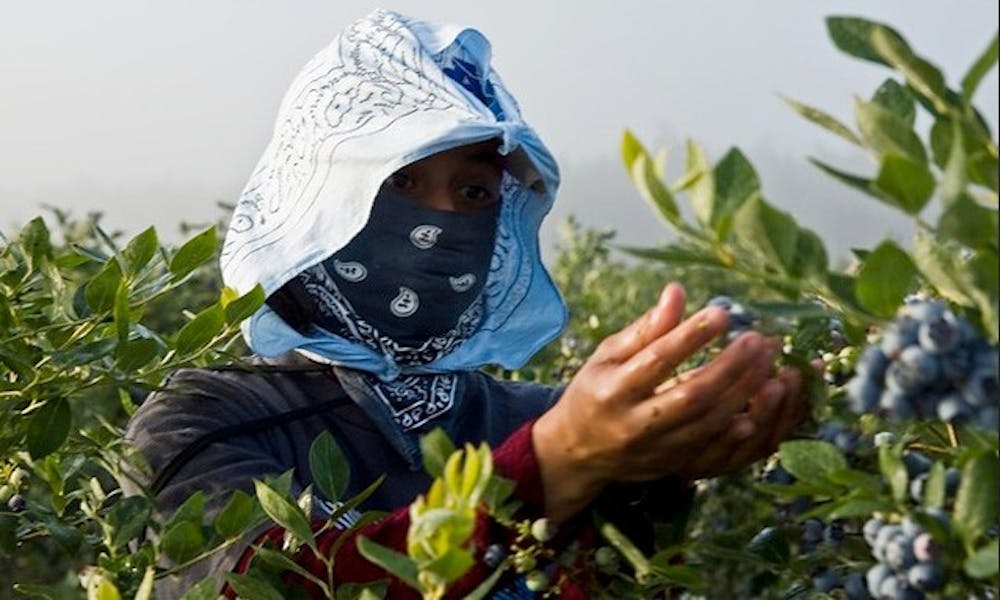Combining food and art may seem hedonistic at first, but the newest exhibit at Golden Belt provides a social critique of the North Carolina agricultural system and the migrant farm laborers who serve it.
Curated by Peter Eversoll, Holy Mole! The Spirit of Food and the People Behind It merges social commentary with documentary realism. The show couples local artist Kelsey Zyvoloski’s images with a video screening and additional photographs taken by a group of North Carolina migrant farmworker teenagers.
The exhibit aims to expose the disparity between Hispanic farmworkers and the food they produce for sale. While these laborers struggle to provide produce for grocery stores across the state, they can barely supply meals for their own tables. Holy Mole! offers an in-depth look into the lives of these workers, as well as the farm system itself.
The main gallery space features the works of the youth artists, while a smaller room connected to the side of the hall displays Zyvoloski’s creative response to the theme. The contrasting rooms allow viewers to experience the more playful aspect of the exhibition first, before moving into Zyvoloski’s critical analysis of the agricultural system.
Housed in the larger space, the photographs taken by the laborers do not seem to be the work of amateurs. Many of the artists demonstrate a thorough understanding of framing techniques and composition.
Rather than focusing on their strained external conditions, the young artists chose to focus on enjoyable aspects of their lives, such as running through the fields. This intimate perspective helps viewers relate to the teenagers and their families. The works also highlight their Hispanic roots and sense of community after immigrating to the United States.
After first observing the series of photographs by the young artists, Zyvoloski’s photos and political commentary have a more resonating effect on viewers. Part of her innovative design consists of dripping one tablespoon of molasses onto a piece of fruit to represent every 100 miles the produce traveled before reaching the dinner table. Recalling the style of English photographer Eadweard Muybridge, who photographed movement undetectable to the human eye, she documents the procedure with both an apple and banana, emphasizing the hidden process that is often overlooked by consumers.
Zyvoloski’s works succeed in criticizing her contemporary society as a whole by utilizing a subtle approach that does not intend to accuse, but only to inform. By covering produce in sticky, dark liquid, she tarnishes an object that people typically view as wholesome and pure.
This demonstration is effective in conveying the message that foods consumed everyday often have a darker history that is not initially evident to purchasers.
Holy Mole! will be on display at Golden Belt in Room 100, Building 3, through Oct. 10. The gallery is free and open to the public.
Get The Chronicle straight to your inbox
Signup for our weekly newsletter. Cancel at any time.

